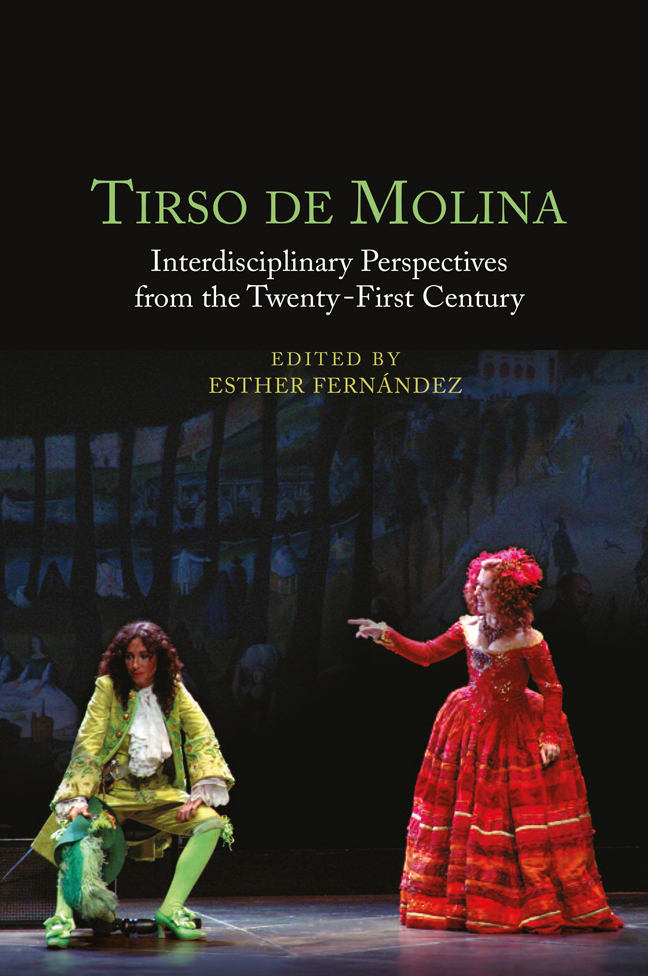11 - The Figurative Geography of Natural Landscapes in Tirso de Molina
Published online by Cambridge University Press: 02 March 2024
Summary
While Tirso de Molina’s most famous plays—those of the cloak and dagger and intrigue variety—tend to take place in urban settings and the palatial estates of the social elite, their notoriety obscures a significant number of works or portions of works in his corpus set outside of the metropolis. That being the case, it is perhaps unsurprising that the critical and production history of Tirso’s works have given less attention to the prevalence of non-urban spaces in his plays, leaving the natural landscapes less traveled, the wilderness less explored. In this chapter, I offer a framework for reading natural space—to map the figurative theatrical geography—in Tirso de Molina’s dramatic corpus, defined broadly in order to take into account the range with which the playwright deploys non-urban settings to organize the space within which dramatic action takes place and produces meaning. The typology I offer to categorize natural landscapes in the present chapter has been imagined in the spirit of exploring natural landscapes with a fresh critical perspective supported by representative examples, and building from previous scholarship rather than supplanting earlier approaches with a comprehensive or exhaustive study. Chiefly, I conceive of landscape as an “ideologically-charged and very complex cultural product” (Cosgrove 1984: 11); incorporating these influences into a working definition of landscape proves useful towards understanding the figurative representation of place as depicted in the aesthetic practices of the Spanish comedia, with its characteristic preoccupation with the organization of theatrical space, as well as its cultural vitality in the formation of ideologies of the Baroque. This chapter examines two types of natural landscapes represented in Tirso de Molina’s dramatic production, with a section dedicated to each in the present study: natural landscapes that serve as settings for discovery scenes (i), and nature as a transit landscape (ii).
Natural Landscapes and the Spatiality of the Discovery Scene
Of the natural landscapes most common in Tirso de Molina’s playwrighting, those found in his hagiographical and miracle plays are the most uniform in their spatiality (i.e., the form and function of theatrical space). In these plays, nature serves as the setting where miracles occur for which a specific conceptualization of natural space organizes the way the miraculous is represented theatrically. Chiefly, nature becomes a place where the divine comes into contact with reality.
- Type
- Chapter
- Information
- Tirso de MolinaInterdisciplinary Perspectives from the Twenty-First Century, pp. 160 - 171Publisher: Boydell & BrewerPrint publication year: 2023

